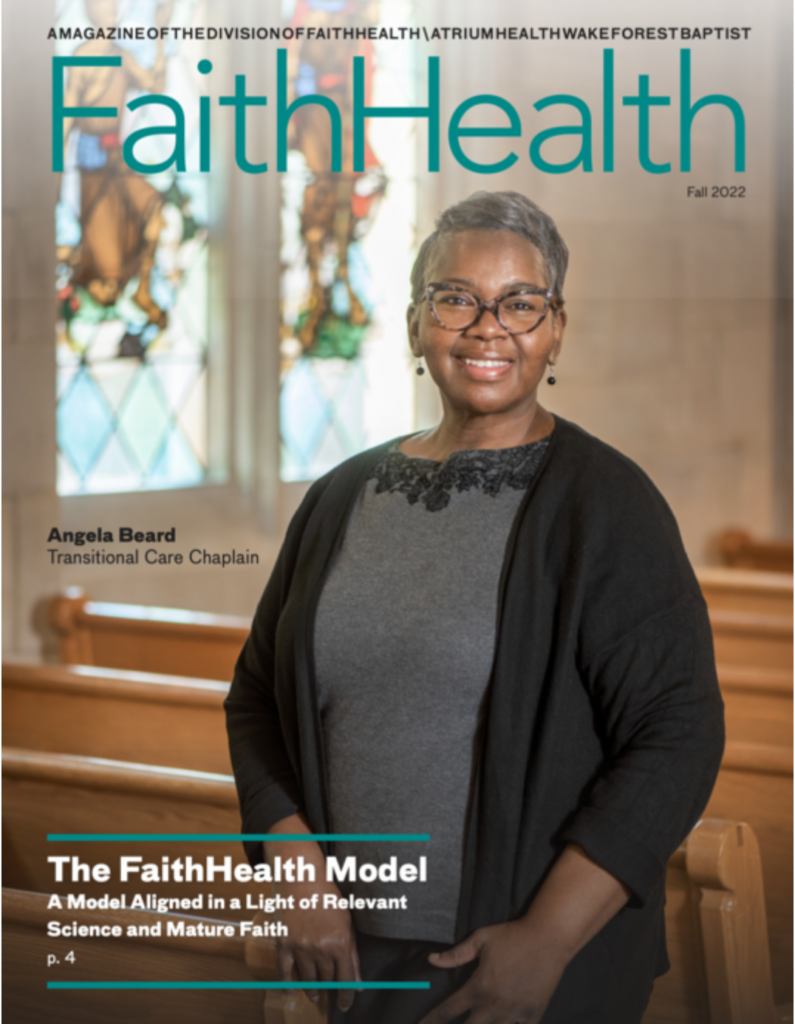By Chris Gambill
One aspect of congregational life that doesn’t always get a lot of discussion is what some businesses call the “churn rate.” The churn rate is slang for talking about how many individuals move into or out of a given system over a specific period of time. In congregational life, the churn rate refers to the number of people who enter a congregation (by joining or becoming regular participants) and those who leave (transfer membership, die, dropout, etc.).
My metaphor for this churning in congregational life is that people enter through the front door and exit through the back door. Most congregations can describe what is happening through the front door, but few can accurately describe what’s happening through the back door. The exception to this is that many congregations are keenly aware of the number of deaths they experience during a given time period. As congregations get older, this rate is accelerating dramatically in many of them. Some people also leave the church for more obvious reasons such as interpersonal or congregational conflict. Many individuals are conflict-avoidant and when conflict arises in the church they head for the nearest door.
The back door
There’s another aspect of what’s happening at the back door (the attrition rate) that is much harder to measure and describe accurately. I’m talking here about the number of people who simply leave the church quietly and rarely if ever come back. It often happens so subtly that it takes a while for anyone to notice it’s happened. “Is someone in the Jones family sick? I don’t think I’ve seen any of them in a couple of weeks.” It may very well be that no one is physically sick in the Jones family. They have just silently moved to the periphery of the congregation or perhaps even found a new church home and not bothered to tell anyone. To their credit, I suppose, they don’t make a big scene or even look for sympathy in leaving. They just go. Making matters worse, you may never know exactly why they left.
In a time when most established, traditional congregations are plateaued at best and more commonly declining in membership and participation, it’s time to ask some important questions: Is the back door of your congregation seeing more traffic than the front door? If so, why?
Top reasons
According to a Pew Forum study, roughly half of Americans have changed their religious affiliation at least once in their life. This is born out in my own ministry experience. Practically every congregation I visit as a consultant is composed of a wide variety of members who were formerly affiliated with another church or denomination.
A 2007 Lifeway study revealed that 58 percent of people made a church switch due to what might be described as a negative motivation (“my need/desire toleave my previous church”), while 42 percent left because of a more positiveattraction to another church. The study also identified two top reasons for leaving a church. Twenty-eight percent of those who left cited the reason as “church was not helping me to develop spiritually” followed by 20 percent who said they did not feel meaningfully engaged or involved in meaningful church work. While this study doesprovide some insight it still leaves many questions about the churn rateunanswered.
There are undoubtedly many reasons why individuals choose to leave a church. Because many leave quietly through the back door, we can often only speculate about the specific reasons for their departure. There are several plausible theories about why this is such a common occurrence. As mentioned earlier, conflict is certainly an important factor for many who choose to make an exit.
 Another contributor may be that church members are now prone to exhibit the same kind of consumeristic behavior they exhibit in the other areas of their life. In the same way one might choose which movie to watch on a Friday night, or whether to shop at Target versus Walmart for a certain item, individuals sometimes treat church in the same way. When a new or a more attractive option appears, they simply choose to leave their current church and start attending the new one. Other theories for explaining congregational churn point to factors like shifting music and worship preferences, the availability of quality youth and children’s programs, theological differences, or various changes in congregational life.
Another contributor may be that church members are now prone to exhibit the same kind of consumeristic behavior they exhibit in the other areas of their life. In the same way one might choose which movie to watch on a Friday night, or whether to shop at Target versus Walmart for a certain item, individuals sometimes treat church in the same way. When a new or a more attractive option appears, they simply choose to leave their current church and start attending the new one. Other theories for explaining congregational churn point to factors like shifting music and worship preferences, the availability of quality youth and children’s programs, theological differences, or various changes in congregational life.
Reclaim the connecting role
I think there is one other important factor that might help explain the busy back doors of our churches. Simply put, it’s a relationship deficit. One might argue that Acts chapter 2 describes a Christian community at its very best: “ They devoted themselves to the apostles’ teaching and to fellowship, to the breaking of bread and to prayer.” In my experience, we are far from this ideal today. Congregationsare often at best collections of “familiar strangers.” In his book Bowling Alone Robert Putnam has documented the deep loss of community and social capital in American life. I believe this loss has also occurred in many churches. We have come to mistakenly think our churches are primarily programmatic oreducational organizations instead of the relational organizations I believe they were meant to be.
If congregations can reclaim their roles as places that connect people to one another and to God authentically and with depth, then we may find our back doors less frequented. If that happens, perhaps we can begin to see more of what that earliest church did as a result of their deep relationships and shared sense of community: “And the Lord added to their number daily those who were being saved.”
Chris Gambill is director of the Center for Congregational Health, in the FaithHealth division of Wake Forest Baptist Medical Center. The Center strengthens congregations through consulting, leadership coaching and intentional interim ministry.

